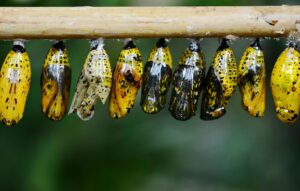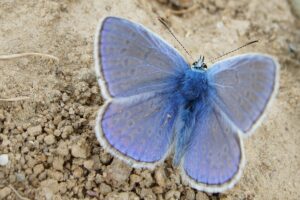Butterflies
Butterflies are some of the most enchanting creatures found in nature, captivating people with their delicate beauty and graceful flight. Belonging to the order Lepidoptera, which also includes moths, butterflies are renowned for their vibrant colors, intricate patterns, and ethereal wings. These winged wonders have fascinated humanity for centuries, symbolizing transformation, beauty, and freedom across various cultures and traditions.
The life cycle of a butterfly is a remarkable journey of metamorphosis, beginning as an egg laid by the adult butterfly on the leaves of specific host plants. From the egg hatches a tiny larva, commonly known as a caterpillar, which voraciously feeds on leaves, growing and molting its exoskeleton several times as it develops. After a period of growth, the caterpillar undergoes a miraculous transformation within its chrysalis or pupa, wherein it metamorphoses into a butterfly.

Once emerged from the chrysalis, the butterfly unfolds its wings, revealing vibrant colors and intricate patterns that serve both aesthetic and survival purposes. These patterns can mimic the appearance of larger, more dangerous animals to deter predators, or they can attract potential mates through intricate displays. The wings of butterflies are not only for display but also crucial for their flight, enabling them to maneuver gracefully through the air in search of nectar and mates.
Butterflies are essential pollinators in various ecosystems, playing a vital role in the reproductive cycle of numerous plant species. As they flit from flower to flower, sipping nectar with their long proboscis, they inadvertently transfer pollen, facilitating the fertilization process and contributing to the diversity of plant life. Their ecological significance extends beyond pollination, as they serve as indicators of environmental health and biodiversity.

One of the most remarkable aspects of butterflies is their migration patterns. Some species undertake extraordinary journeys, traveling thousands of miles across continents in search of suitable breeding grounds and favorable climates. The monarch butterfly, for instance, migrates annually from North America to Mexico, a journey spanning several generations and covering vast distances. These migratory phenomena continue to intrigue scientists and inspire awe in observers worldwide.
In addition to their ecological importance, butterflies hold cultural significance in many societies. Across various cultures, they symbolize transformation, resurrection, and the soul’s journey. In ancient Greek mythology, Psyche, which means “soul” in Greek, is depicted with butterfly wings, symbolizing the soul’s immortality. In Chinese culture, butterflies represent love and joy, while in Native American traditions, they symbolize change and spiritual rebirth.

Despite their captivating beauty and ecological significance, butterflies face numerous threats in the modern world. Habitat loss, climate change, pesticide use, and pollution are among the primary factors contributing to declining butterfly populations worldwide. Conservation efforts aimed at preserving their habitats, planting native host plants, and reducing pesticide use are crucial for ensuring the survival of these enchanting insects for generations to come.
In summary, butterflies are more than just beautiful insects; they are symbols of transformation, resilience, and the interconnectedness of life. Their delicate wings and intricate life cycles inspire wonder and admiration, reminding us of the fragility and beauty of the natural world. By understanding and appreciating these winged marvels, we can work together to protect and preserve their habitats, ensuring that future generations can continue to marvel at their enchanting beauty.

